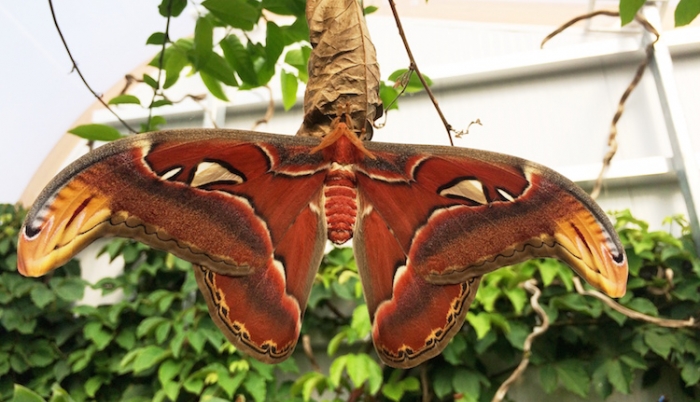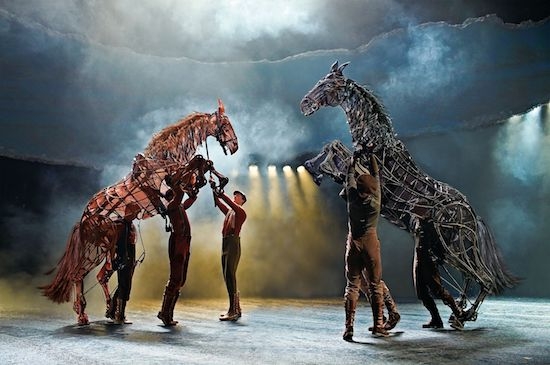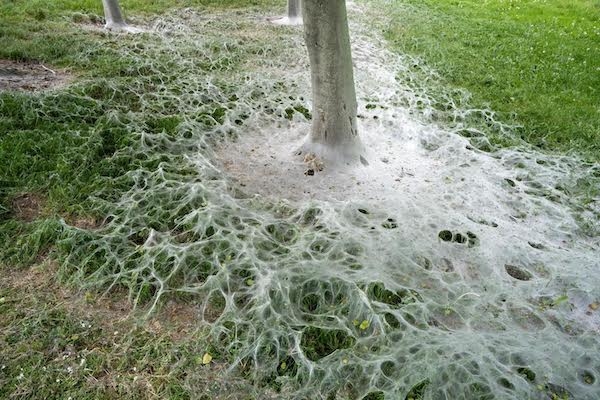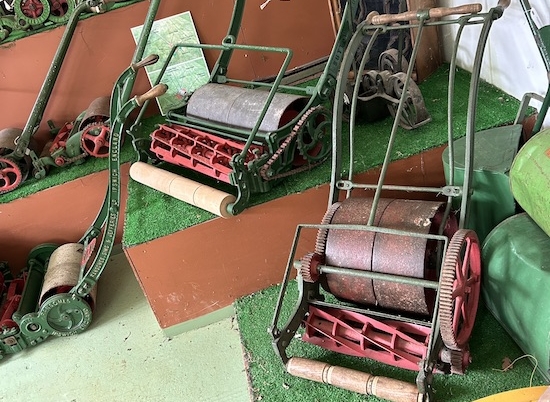Giant moths with no mouth parts and a foot-long wingspan have successfully bred for the first time at ZSL Whipsnade Zoo’s new Butterfly House.
Keepers at ZSL Whipsnade Zoo’s colourful Butterfly House wanted to see if the Atlas moths (Attacus atlas), one of the world’s largest moth species, could breed without any help from keepers, so they gave the goliaths a new home in the form of a large magnolia tree within their tropical biome, and replicated tropical weather conditions, in the hope it would encourage the species to breed.
Within weeks, they were delighted to discover eggs had been laid, and over the next two months, they saw the creatures go through their entire life cycles, from eggs, to caterpillars, to pupa, before eventually developing into the striking looking adult moths.
Team Leader Alex Cliffe said: “The really fascinating thing about Atlas moths is the fact that they don’t have mouths, so once they have become moths, they can’t eat anything and spend all of their energy stores on breeding.
“As caterpillars, they munch voraciously on leaves for up to six weeks, and ours nearly destroyed the tree during that time!
“But as moths with no mouths, they live off of their reserves for about five days, just enough time for them to breed, and then die. The moth stage of their life cycle is actually them reaching old age.”
With a wingspan of 25-30cm, and the largest wing area of all moths, covering about 400cm², these massive moths are among the biggest in the world, despite their remarkably short life span.
Alex Cliffe continued: “As they can only survive for such a short time as moths, the females produce pheromones that can quickly attract a mate with sensitive antennae from several kilometres away.
“One of the things we did to encourage them to breed was to simulate the rainy season, which is their breeding season in their native South-East Asian tropical forest. We kept a strict control on the temperature in the biome, and mimicked rainfall by carefully spraying water over their habitat every day.
“Thankfully, the tree has now recovered from all the very hungry caterpillars and the new moths have already laid more eggs, so we’re looking forward to seeing a whole new life cycle now.”
Visitors to ZSL Whipsnade Zoo can see the huge Atlas moths for themselves, as well as the Zoo’s summer dinosaur experience, Zoorassic Park. For tickets, see www.zsl.org
For a gallery of pictures visit www.facebook.com/thisistotalmk

















